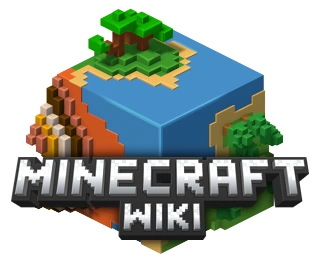編集の要約なし |
KusagawaAzuki (トーク | 投稿記録) |
||
| 115行目: | 115行目: | ||
* [[Block states]], which are, like block entities, extra pieces of data that further define a block. |
* [[Block states]], which are, like block entities, extra pieces of data that further define a block. |
||
| + | {{Minecraft}} |
||
| − | {{マインクラフト}} |
||
| ⚫ | |||
[[de:Blockobjektdaten]] |
[[de:Blockobjektdaten]] |
||
| 126行目: | 127行目: | ||
[[pl:Byty bloków]] |
[[pl:Byty bloków]] |
||
[[zh:方块实体值]] |
[[zh:方块实体值]] |
||
| ⚫ | |||
2017年5月18日 (木) 14:12時点における版
このページの内容は翻訳されていません。
あなたが内容を翻訳してみませんか?
A block entity (previously named tile entity) is extra data associated with a block, beyond the block ID and 4 extra bits of data that every block has.
Usage
Block entities store additional information about certain blocks, with the type of information varying by block. In some cases, this information is used to create a more complex model, such as the book on an enchantment table. In other cases, it is used to store contents of an object. Block entities can be moved by pistons in Pocket Edition (0.15 and higher) only.
List of block entities
These are the current blocks which hold block entities.
| Block Entity | Usage |
|---|---|
| To store the text. | |
| To store the patterns. | |
To store their contents.
| |
| To store the pyramid level, active effects, and contents. Also uses the block's position for the beacon beam. | |
To store:
| |
|
To store which note will be played. |
|
To store the offset of block, direction of movement, and ID (and data value, if applicable) of the moving block. (A moving block can't be stored as a block because it's not aligned to a grid cell.) |
| To play music discs, if any are inside. | |
| For the floating book. | |
| For the particle field effect. | |
| For the type of the head, rotation when placed on top of a block, and (if applicable) data of the player represented. | |
| For the type of command block, the command text, its output strength, and the output text. | |
| For the teleport location and also whether to render the beam | |
| To store information about the structure | |
| To store whether the reaction started and the time remaining in the reaction. | |
| To force the daylight sensor to update its output signal strength. | |
| To show the Block ID and data value of the item displayed inside of it. | |
| To store its output strength. | |
|
To store color. |
See also
- Chunk format#Block entity format - desribes the save format for block entities
- Entities, which are all dynamic, moving objects throughout the Minecraft world, plus several non-moving objects that resemble blocks.
- Block states, which are, like block entities, extra pieces of data that further define a block.
| ヘルプ | |||||||||||||||||
|---|---|---|---|---|---|---|---|---|---|---|---|---|---|---|---|---|---|
| メニュー画面 |
| ||||||||||||||||
| 開発元 | |||||||||||||||||
| ゲームのカスタマイズ | |||||||||||||||||
| エディション |
| ||||||||||||||||
| ゲーム |
| ||||||||||||||||
| 映画 |
| ||||||||||||||||
| 書籍 |
| ||||||||||||||||
| その他メディア |
| ||||||||||||||||
| イベント |
| ||||||||||||||||
| 公式商品 |
| ||||||||||||||||
| その他 | |||||||||||||||||
